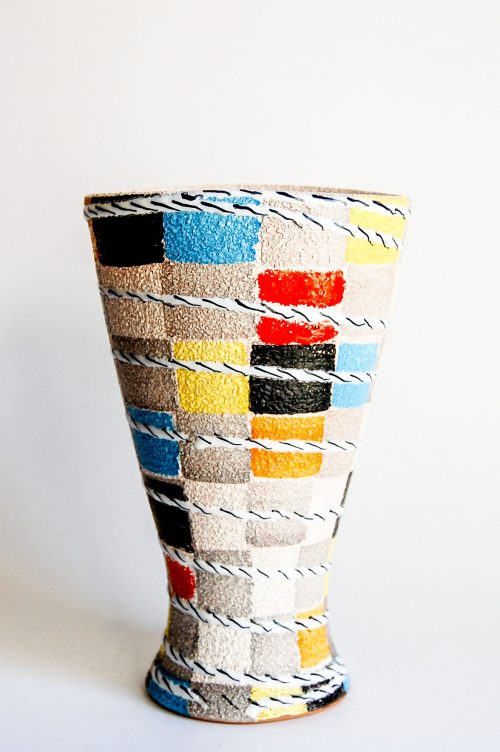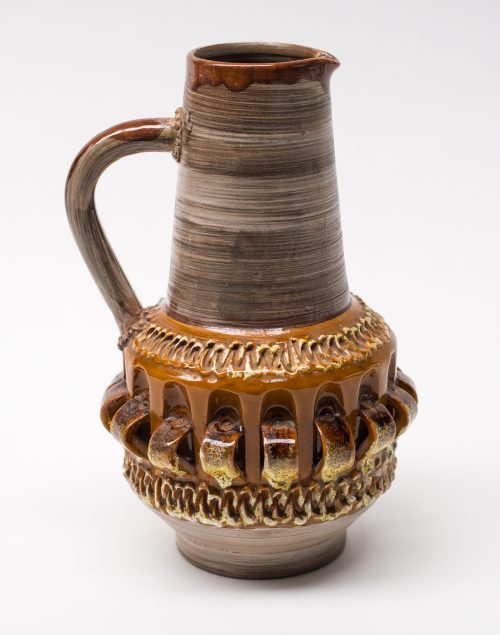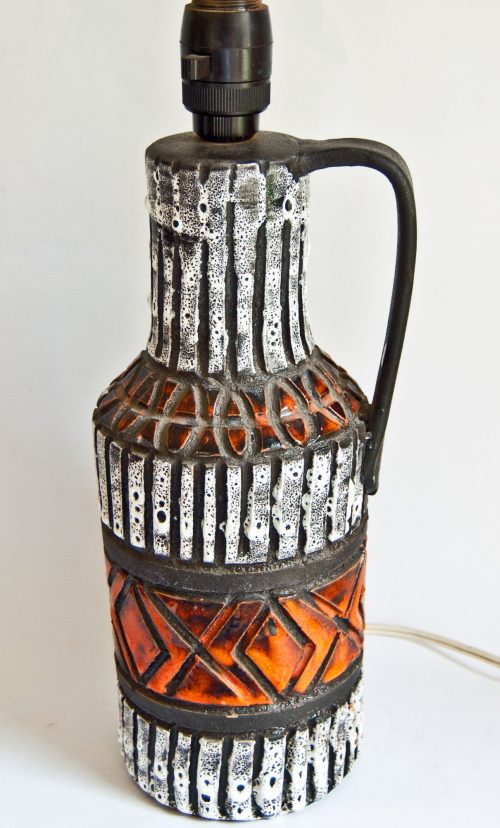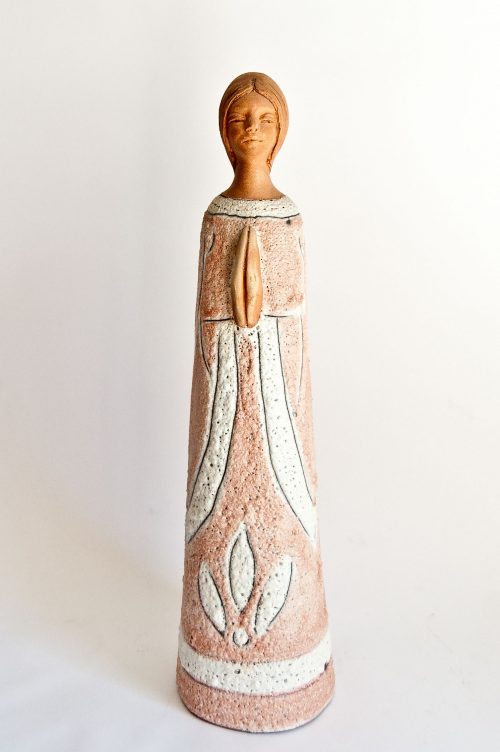Fratelli Fanciullacci Italy

Fratelli Fanciullacci
The brothers Fanciullacci was prolific Italian pottery, who’s work is starting to become more widely known in the past few years, and is keenly sought amongst collectors.
As a style it is hard to pin down as there were so many styles and produced – on a variety of clay bodies. Also, because most records were lost it is hard to identify designers or artist – except it is known that Aldo Londi worked there prior to going to Bitossi.
Pieces from the FF factory were rarely marked – except for some pieces simply marked FF. Most though will have nothing or simply “Italy” and a number. After a while however, with experience, pieces by this maker start to stand out from the rest.


The best examples of work seem to be from the 1950s and 1960s.
Mark Hill in his book “Alla Moda” has a comprehensive chapter on FF, with loads of fantastic photos – classified into styles. Because of this “Alla Moda” is one of the best ways to identify a piece of FF.

There used to be an online site with the history of this iconic Italian maker, but seems to have been lost to time. I got this extract from it over 15 years ago.
The Fratelli Fanciullacci pottery was established in Capraia Fiorentino in 1862 (conflicting reports give a date of 1858) by Raffaello Fanciullacci (1803-1881). The company originally confined itself to making simple, utilitarian, table and kitchenware, jars, etc (stovigliere, in Italian). By 1880 the pottery’s name was changed from Ceramiche Capraia (with the figure of a wolf and a goat as its logo) to The Brothers (Fratelli) Fanciullacci.
In 1911 it was decided to move the operation from Capraia to the other side of the Arno River in Montelupo. They were such an immediate success that by 1914 the company had over 1,000 different molds thus making their range of offerings one the most appealing in the country and making the pottery the largest employer in the area.
During these early years the firm continued to concentrate on the manufacture of stovigliere but slowly branched out onto a rich repertoire of artistic products. They understand the pulse of both the Italian people and American consumer (the company’s main export destination. The brothers produced works in the latest styles as soon as they appeared. At the end of World War II, Colorificio, the parent company of Bitossi. took control of Fratelli Fanciullacci but allowed the family to operate the factory with very little corporate interference.On November 4,1966 the Arno River flooded. It was the worst flood since 1557. Many people died and many of the art treasures, ancient manuscripts and monuments of Florence were lost. More than forty years later restoration and preservation work still continues. In Montelupo Fiorentino the Fratelli Fanciullacci was hard hit. More than a thousand priceless molds, many dating back to company’s founding in 1911, were lost. The kilns were destroyed, the raw clay inventory was wiped out as was the company inventory of finished products destined for export to the U.S.. The company closed down operations for more than a year and without work many of the firm’s most talented artist and craftsmen left the area to find work and new housing for their families. Some production was shifted to a new temporary factory in Florence while the Montelupo site was being renovated. Production and quality slipped dramatically in Montelupo after 1966 and this is the year given by collectors as the last of the Fanciullacci ceramics worthy of collecting. Fratelli Fanciullacci made a brave attempt to re-establish itself but it never seemed to recreate that spark of artistic genius that allowed it to shine in the first half of the twentieth century. Fratelli Fanciullacci ceased all operations in 1988.

The sculptural figures of 2 Choristers below I have attributed to Fratelli Fanciullacci but this still has to be verified by someone…which has been difficult because I have never seen them anywhere else. The glaze on the bottom one is identical on one to the pinkish hued ewer vase above, and the tri-leaf motif at at the bottom is one seen on other FF pieces.


2022: Recently this pattern has been identified as FF.



One of the best resources currently for identifying FF is the Facebook page for Bitossi and MCM Italian Makers HERE :https://www.facebook.com/groups/109867845821284
Comments are closed.





Hello.
I have a FF vase… I believe Glazed
It was a gift in 1987.
Markings are “6533 Italy FF”
Lovely vase with a Horse, flowers & leaves.
LikeLike
Lovely…sounds like one I have in textured pink.
LikeLike
I have two pieces which I believe to be Fratelli Fanciullacci based on a piece similar identified from ebay. I could forward you a photo of the pieces. If I was able, would you confirm for me that they are by FF. One has a mark ‘607 Italy’ and the other has no mark at all. Thank you in advance. Karen Farlow
LikeLike
Hi Karen, the best and most reliable place for quick ID’s of Italian pottery is the Facebook for MidCentury Italian pottery here: https://www.facebook.com/groups/109867845821284/
LikeLike